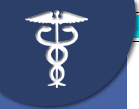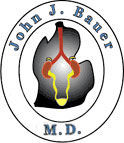


![]() GETTING STARTED
GETTING STARTED
![]()
![]() Site Map
Site Map
![]()
![]() Disclaimer
Disclaimer
![]() ABOUT US
ABOUT US
![]()
![]() Physician
Physician
![]()
![]() Our Services
Our Services
![]()
![]() Patient Info
Patient Info
![]()
![]() Job Opportunities
Job Opportunities
![]()
![]() Contact Info
Contact Info
![]()
![]() Home
Home
![]()
![]() OUR SPECIALTY
OUR SPECIALTY
![]() CENTERS
CENTERS
![]()
![]() Center for Male
Center for Male
![]() Sexuality
Sexuality
![]()
![]() Center for
Center for
![]() Urinary Control
Urinary Control
![]()
![]() Center for
Center for
![]() Prostate Diseases
Prostate Diseases
![]()
![]() PROCEDURES
PROCEDURES
![]() & SURGERIES
& SURGERIES
![]()
![]() In-Office Procedures
In-Office Procedures
![]()
![]() Your Surgery Details
Your Surgery Details
![]() LEARN MORE
LEARN MORE
![]() ABOUT UROLOGY
ABOUT UROLOGY
![]()
![]() Health Calculators
Health Calculators
![]()
![]() Links
Links
![]()
![]() UrologyChannel
UrologyChannel
|
||
|
A subspecialty clinic John J. Bauer, M.D., brings effective incontinence treatment to the forefront of the practice. He established the Center for Urinary Control to provide specialized comprehensive services for the treatment of all types of bladder control problems, interstitial cystitis for both males and females of all ages.
Types of Incontinence | Male Incontinence | What is Interstitial Cystitis?
Services |
Patient Forms | Online Health
Calculators
Feeling isolated and embarrassed is not unusual when you suffer from incontinence, or loss of bladder control. You may think you will never lead a normal life; no one can help you or cares. Nevertheless, there is help available from the Center for Urinary Control, a unique group of specialists with years of experience in the treatment of bladder control and incontinence issues. Alternatives are offered that will put you right back to an active way of life. Loss of bladder control affects at least one of every 10 adults. Half of all women experience urinary incontinence (the accidental loss of urine) at some point in their lives. It is most common in women, however, children and men also experience urinary incontinence. You may feel like you are the only one that suffers from this condition. However, in the U.S., approximately 10 million people suffer from incontinence. This includes older people, women who have had children, anyone who exercises, and men who have had prostate surgery. Incontinence can leave you exhausted, robbed of a good night's sleep, and make travel uncomfortable or even impossible. It can keep you from enjoying a full life. Only 50% of those with some form of incontinence ever tell their physicians. Yet, despite these frustrations, only about one in 12 people seek relief. Most don't realize help is available - and it doesn't always mean surgery.
It is the establishment of this subspecialty center which will expose patients to these successful treatments offered by our practice. It is our genuine feeling that no person in this day and age should have to endure a bladder leakage problem. It is not just a "normal" part of aging.
Urinary Incontinence is an unplanned loss of urine. Urine loss can be in large amounts or only a few drops. People with urinary incontinence often need to protect themselves with diapers or pads. Urine loss can often be cured or improved. Millions suffer needlessly from embarrassment and discomfort. Understanding the problem is the first step in helping you gain control. The goal of our program is to help you stay drier and reduce the need for protection. For a recent, patient informational, please see Female Urinary Incontinence. Causes of Urinary Incontinence Involuntary loss of urine (incontinence) is not a normal part of aging as many patients are condition to think, but it is a symptom of existing medical problems. Incontinence may be the result of pelvic muscles weakened from childbirth, stroke, diabetes, bladder infection, side effects of medication, prior surgery, or radiation treatments. For more information on the many risk factors for bladder control dysfunction follow this link as marked. There are three main types of incontinence: stress, overflow and urge. You also may have a combination of these called mixed incontinence.
Males also have significant problems with all three types of incontinence discussed earlier. The most common male problems that lead to these bladder control issues are:
The male procedures for these problems are located in the surgical services section in the Center for Urinary Control. What is Interstitial Cystitis (IC)? Interstitial cystitis is a chronic inflammatory condition of the bladder. IC is a poorly understood disease, and its exact causes have yet to be identified. Although no bacteria, fungi, or viruses have been found in the urine of IC sufferers, some investigators believe that a yet-to-be discovered infectious agent causes IC. Some researchers believe that IC is toxin mediated, due to ischemia or an autoimmune disorder, which is a person's immune system, for unknown reasons, starts to "attack" its own cells. A popular theory, currently, is that the inner layer of the bladder (epithelium) is deficient in glycoaminoglycans, a protective coating on the bladder mucosa. Most investigators believe that the cause of IC has a number of factors and that it is better classified as a syndrome rather than a single disease. A special IC diet can prevent worsening of your symptoms. Diet recommendations include avoidance of all caffeine products, carbonated drinks (pop, soda, etc.), tomatoes and tomato products, citrus fruits and juices, alcoholic beverages, and spicy foods. An Interstitial cystitis symptom and problem questionnaire is one diagnostic tool used for IC. General We help people manage urine loss, frequency, and urgency. Patients have access to the following range of services as needed.
Our physicians in the near future are obtaining specialized training in providing a more advanced electrical stimulation therapy called InterStim (an implantable stimulation device, and lower extremity nerve stimulation for chronic unremitting urgency. Our Center is also going to invest in the newest development by NeoTonus, Inc., which is a chair that treats the pelvic floor laxity with extracorporeal magnetic pulse wave therapy. Comprehensive diagnostic and therapeutic services are available for bladder control problems, urinary incontinence and interstitial cystitis. Please go to the marked links for more in-depth information.
In-Office Procedure Services John J. Bauer, M.D., and the Center for Urinary Control offer many procedures in the office at a reduced fee compared to the same procedure in the hospital. For descriptions about these office procedures, use the links below that will take you to the specific section of the In-Office Procedures page of our site. Our practice treats a variety of urological conditions. Included below are the most common procedures that we perform in the office that are involved in the diagnosis and treatment of bladder control problems:
Surgical Services John J. Bauer, M.D., performs many urological services in the local hospitals. The outpatient and inpatient surgeries listed below are performed at these affiliated hospitals or surgery centers. The procedures listed below are direct links to "Your Surgery Details" which will have everything that you would want to know about you procedure, from after the diagnosis until fully recovered. Please use this section to learn about your upcoming surgery or to contemplate whether you really want a surgical procedure.
Endoscopic Surgery: A few questionnaires can be downloaded and printed out before your appointment.
Below you will find a list of these forms that link to printer-friendly (PDF) pages. [printable/PDF page help] We
request each patient to bring the appropriate forms to the office for their consultation.
Why Use the Center for Urinary Control?
The Center for Urinary Control is a comprehensive service for the treatment of all types of
urinary incontinence: stress, urge, frequency, overflow, pelvic floor problems and interstitial
cystitis. Typical patients that can be helped are:
A board-certified urologist monitors the assessment of each patient's problem and
supervises the design of the treatment program. Specially trained nurses coordinate the
continence treatment program.
Incontinence is frustrating enough without wasting time trying to determine what's wrong. At
The Center, we have the expertise to diagnose you accurately and quickly. Dr. Bauer and his staff are
genuinely concerned about your health. We feel the future of healthcare is moving toward
offering sub-specialty centers of excellence, which will have the most up to date treatment in
urology. Our center for excellence, the Center for Urinary Control, offers many options and
the solutions for people that suffer from urinary incontinence.
| ||
www.flinturology.com Flint, Michigan [map] ~ ~ ~
FREE Plug-ins you may need for special pages of our site: |

